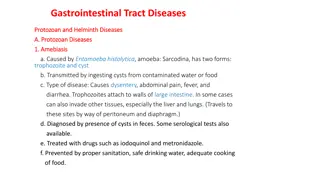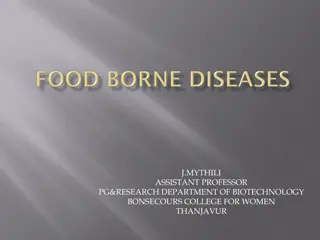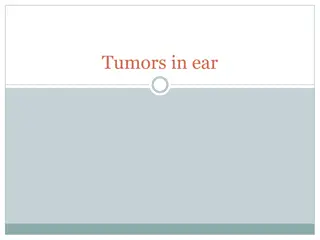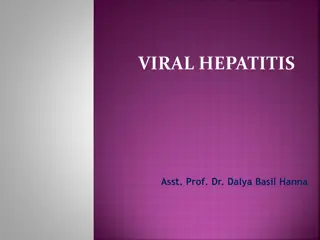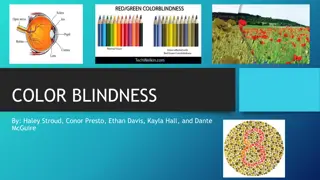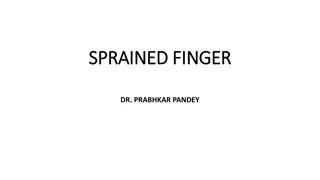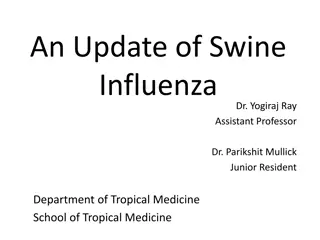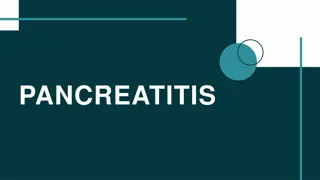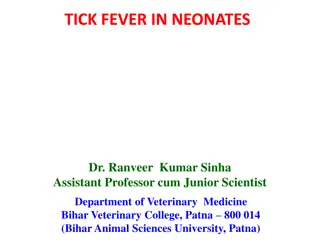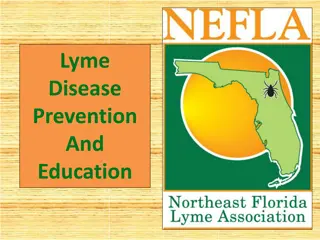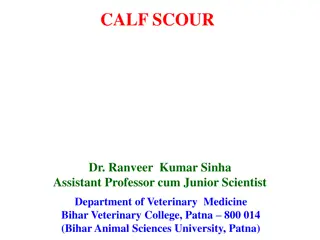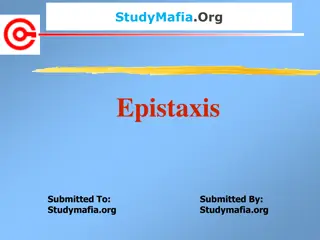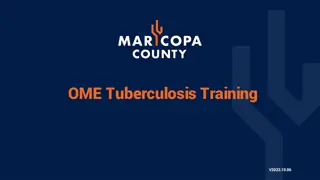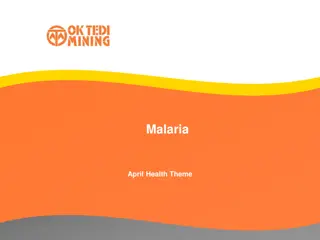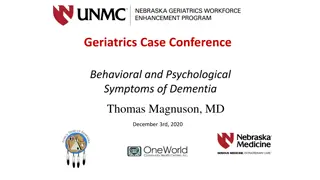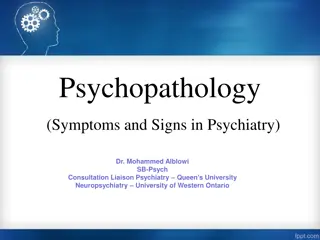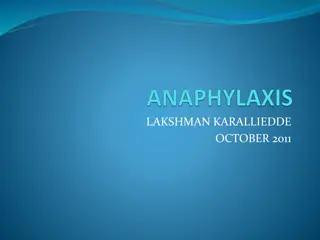Understanding Giardiasis: Causes, Symptoms, and Prevention
Giardiasis, caused by the parasite Giardia intestinalis, is a common diarrheal illness in humans and animals. It spreads through fecal-oral transmission and can be highly contagious. Symptoms include diarrhea, nausea, cramps, and fatigue. Young children and those in certain risk groups are more susceptible. Prevention involves practicing good hygiene, avoiding contaminated water sources, and proper treatment.
Download Presentation

Please find below an Image/Link to download the presentation.
The content on the website is provided AS IS for your information and personal use only. It may not be sold, licensed, or shared on other websites without obtaining consent from the author. Download presentation by click this link. If you encounter any issues during the download, it is possible that the publisher has removed the file from their server.
E N D
Presentation Transcript
Giardiasis (Giardia) Giardiasis (Giardia) Giardiasis is the second most common cause of parasitic human diarrhea. Giardiasis is the second most common cause of parasitic human diarrhea. Giardia is the most common cause of water Giardia is the most common cause of water- -borne disease. Giardiasis has been called traveler Giardiasis has been called traveler s diarrhea. s diarrhea. borne disease. Etiology Giardiasis is caused by a microscopic, single-celled, protozoan pa1rasite, G. intestinalis, also known as G. lamblia. G. intestinalis has a two-stage life cycle, trophozoite stage and cyst The cyst stage can remain viable in a moist environment for several months because of its thick protective capsule. Cysts present in the environment are swallowed when a potential host eats feces- contaminated food, drinks feces-contaminated water, or puts any feces-contaminated object in its mouth. The protective capsule is removed by the acid in the stomach, and two trophozoites are formed. The trophozoites are carried to the first part of the small intestine, where they attach to the intestinal wall and reproduce by binary fission. Some of the trophozoites will encyst and pass in the feces, some unencysted trophozoites will also pass in the feces. 1
Hosts Giardiasis is found in humans and a wide variety of domestic and wild animals including dogs, cats, cattle, sheep, horses, pigs. Transmission Giardiasis is spread by the fecal-oral route and can be very contagious. The host must ingest feces contaminated with G.intestinalis cysts via food, water, hands, or an inanimate object. When the cysts are passed in the feces of an infected host they are immediately infective, and it takes very few ingested cysts to cause infection. Transmission can be from person to person, animal to animal, person to animal, or animal to person. 4
Giardiasis in animals and humans Giardiasis is the same in animals and humans. The disease is more often seen in young animals and children, probably because they are more apt to put contaminated items in their mouths. The symptoms of giardiasis appear 7 to 10 days after ingestion of the cysts. They include severe, foul-smelling diarrhea; nausea; abdominal cramps; gas; fatigue; and weight loss in the presence of a normal appetite and normal food intake, there is usually no fever and no blood in the diarrhea; feces are usually formed, not watery, and are mixed with mucus. The symptoms usually last about 2 weeks but may last as long 2 months or even as long as a year. Some cases are fatal. In young animals, growth may be retarded. 6
Some people are exposed to giardiasis more than others. They include: -People who work with animals. - People living in crowded living conditions with poor sanitation. -People who work in child care facilities -Young children in child care facilities. -People who travel to developing countries. -People who spend time in the wilderness and drink untreated water from streams or lakes. -People and animals who are immunocompromised may develop more severe symptoms when infected with G. intestinalis. Not all people or animals who are infected with G.intestinalis will develop symptoms of disease. They can, however, be a source of infection to others. 7
Diagnosis Diagnosis of giardiasis is based on finding cysts or, less frequently, trophozoites in fecal samples. Because the cysts and trophozoites are shed intermittently, it is necessary to examine a series of at least three fecal samples. A history of recent travel to developing countries, hiking, camping, and drinking untreated water from streams or lakes can be helpful in establishing a diagnosis. Serologic tests have been developed to detect the presence of Giardia antigens in blood. 8
Prevention 1. Use treated water when brushing teeth, rinsing food that will not be cooked, washing dishes. 2. Avoid drinking water that may be contaminated with animal or human feces. 3. Dispose of waste materials in such a way that they cannot contaminate surface or ground water. 4. Wash your hands with soap and safe water after using the toilet, changing diapers, gardening, handling animals, or dealing with animal feces. 5.Do not drink unpasteurized milk or eat unpasteurized dairy products. 6.Do not go into swimming pools, rivers, springs, ponds, lakes, or streams if you have diarrhea. Avoid swallowing any water from any of these sources. 7. Teach children how to wash their hands after using the toilet or handling animals. 9




